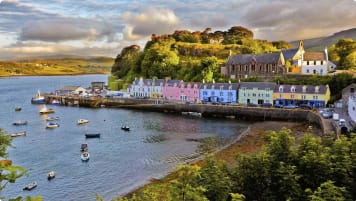Questions about the Outer Hebrides, Scotland. The Travellers definitive guide
Explore and learn about on a Seniors small group tour of the Orkney Islands and other Scottish islands. Learn about the pastoral, cultural and historic settlement of the islands including Skara brae.
8 Aug 21 · 2 mins read
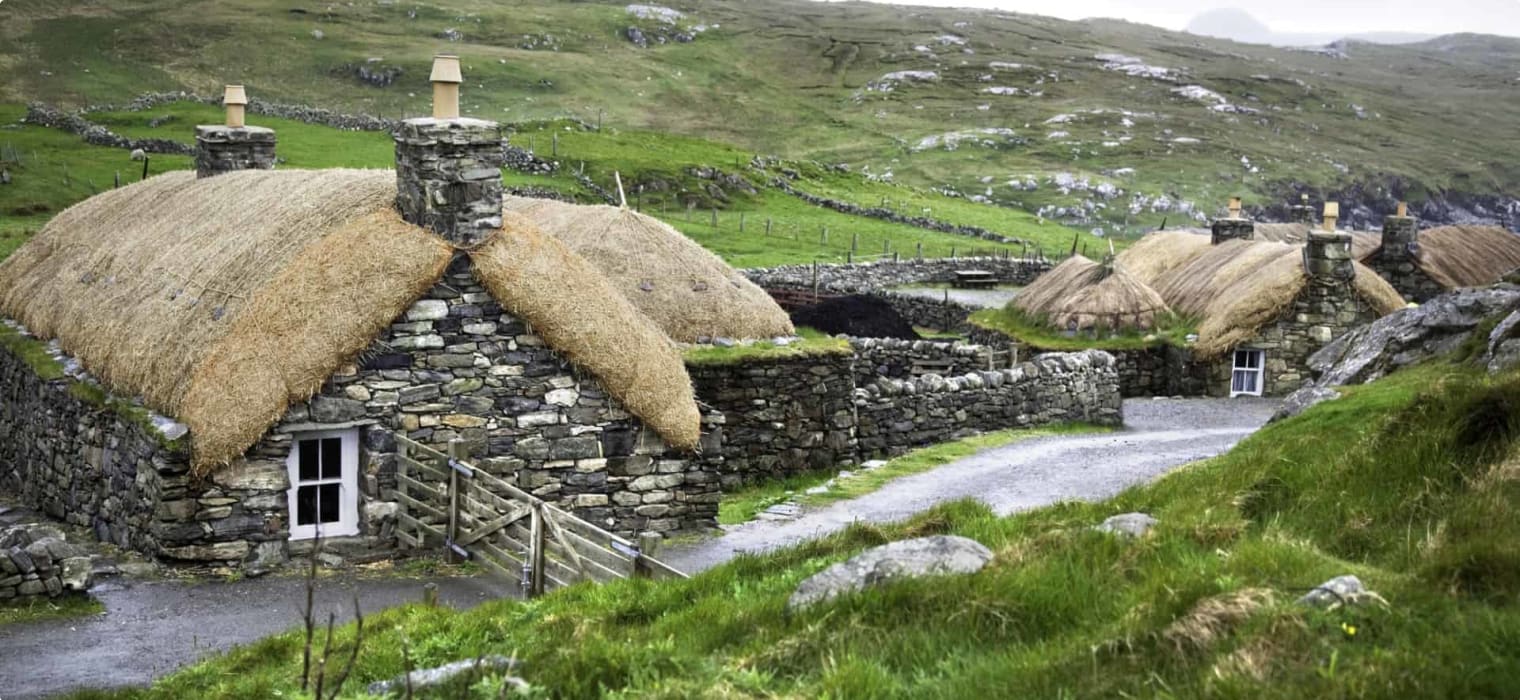
Questions about the Outer Hebrides for senior travellers.
Odyssey Traveller specialises in crafting unforgettable experiences for senior and mature-aged travellers interested in learning as they travel whether as a couple or solo traveller. Providing adventure and educational programs to escorted small group tour since 1983. Odyssey has built up a reasonable knowledge bank to answer questions about the Outer Hebrides that travellers are likely to ask, as they make their plans to tour independently, or with us as part of a small group tour. We hope that this list of frequently asked questions and the answers we provide will help you with planning your next holiday. Read on, but please do not hesitate to contact us via the website, or through email or chat if you have more questions about the Outer Hebrides or our other tours.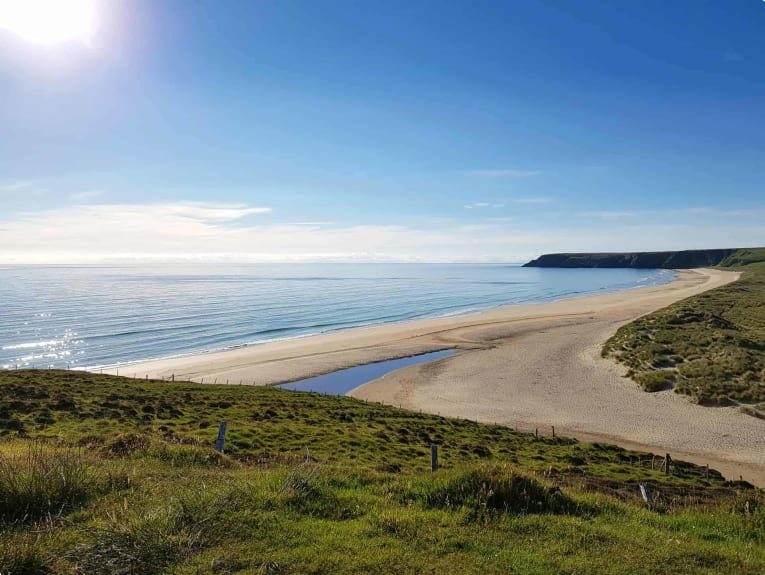

FAQs
What is the Outer Hebrides?
The Outer Hebrides is a crescent-shaped archipelago of 200 islands which lies around 65 kilometres (40 miles) off the northwestern coast of mainland Scotland.
Stretching 210 kilometres (130 miles) from Lewis in the north to Barra Head in the south, the Outer Hebrides belong to Scotland’s Western Isles (in Gaelic, Eilean Siar) council.
As you can tell from its name, it is farther away from the Scottish mainland than the Inner Hebrides, which is separated from the Outer Hebrides by the Minch and Little Minch channels in the north and by the Sea of the Hebrides in the south.
Why do people visit the Outer Hebrides?
Visitors travel to the Outer Hebrides to go on walks or hikes to appreciate the islands’ rich landscape and wildlife, or to relax by the beach to enjoy the vibrant blue of the Atlantic. There are castles with history to see and plan your itinerary around such as Amhuinnsuidhe castle, Kismul castle or Clements church as well as the beautiful island of great bernera to explore.
The turbulent waters of the ocean have given the Outer Hebrides a complex and dramatic terrain: sandy beaches, sheltered bays, treeless moors, flower-dotted grassy plains (called machair ), and soaring mountain tops. The Outer Hebrides also has a collection of Stone Age stone circle(s) and monoliths (notably, the Neolithic Calanais Standing Stones, which predate Stonehenge and even the Pyramids of Giza) for those interested in archaeological sites such as stone circles and ancient Scottish history, and the islands are an important stronghold of the Gaelic language and lifestyle. Visitors also enjoy the quiet and relative isolation of these fascinating uninhabited islands.
What is the population of the Outer Hebrides?
The total population of the Outer Hebrides is only around 26,950, as of 2017.
What does "Hebrides" mean?
The name Hebrides is derived from the Norse word Havbredey, meaning the ‘isle on the edge of the sea’.
Are all of the islands of the Outer Hebrides inhabited?
No. Only 13 of these islands are inhabited, with about 80% of the population based in Lewis and Harris, which share the same landmass.
What are the major islands of the Outer Hebrides?
Aside from Lewis and Harris, which are on the same island, the other major islands are North Uist, Benbecula, South Uist and Barra.
Lewis is the most populous and its town Stornoway is the commercial and administrative centre of the whole Outer Hebrides.
What language do they speak in the Outer Hebrides?
The Outer Hebrides is one of the few areas in Scotland where Scottish Gaelic is still predominantly used as the spoken language.
Up to three quarters of the population in some areas speak the language, and education is provided in Gaelic. But you need not know Gaelic to enjoy your visit to the Outer Hebrides. Signage is in both English and Gaelic in many areas. However, if you are driving, it’d be best to pick up a bilingual (Gaelic/English) map. Those interested in the local linguistic traditions can take classes and watch performances rooted in the Hebrides’ Celtic heritage.
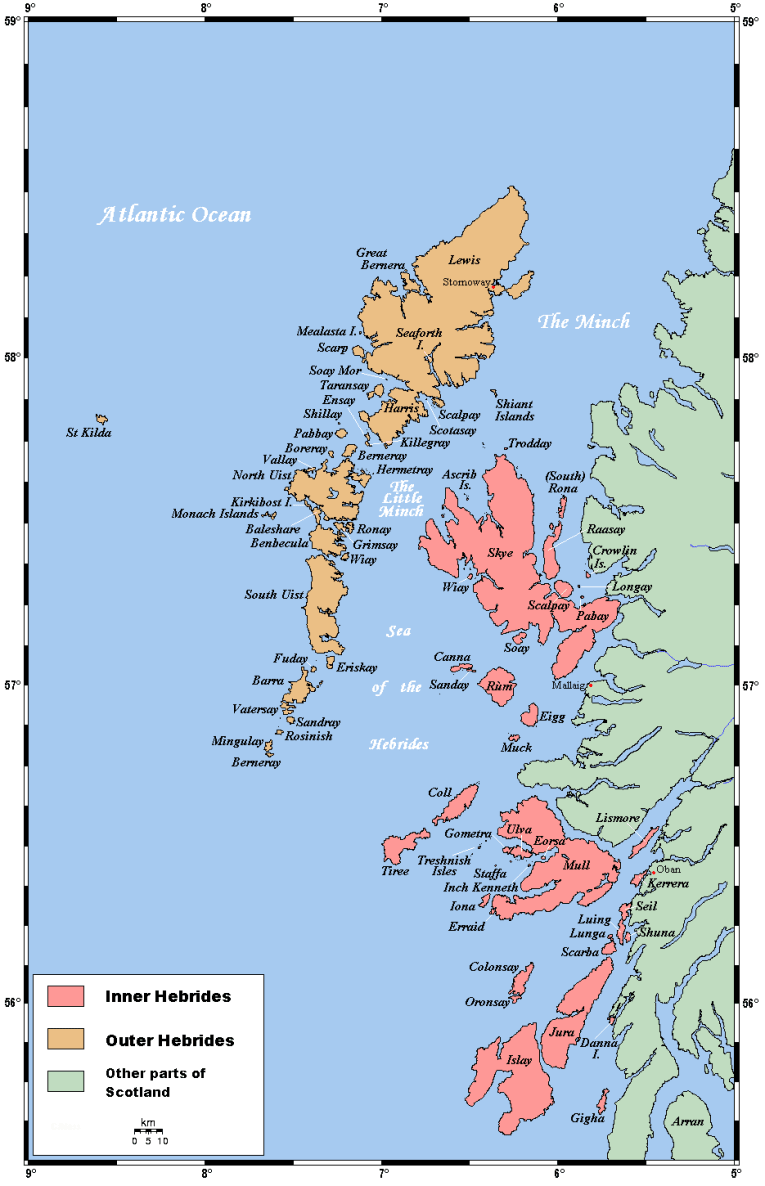
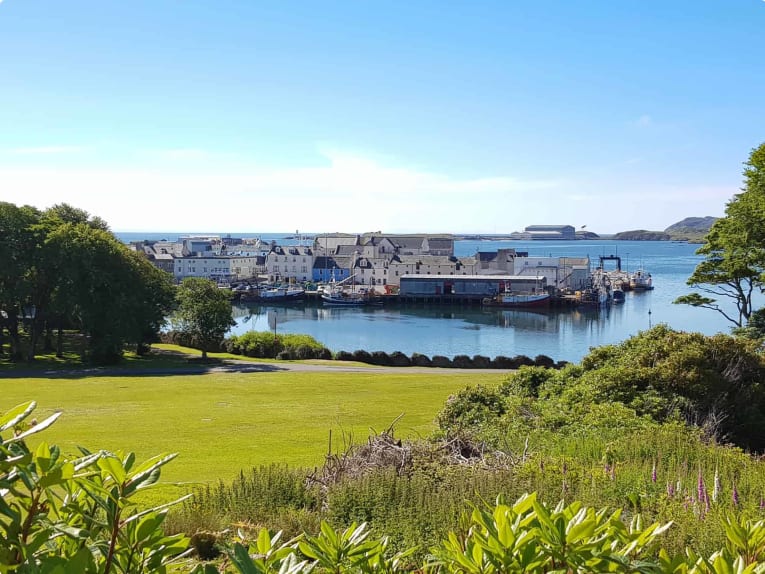
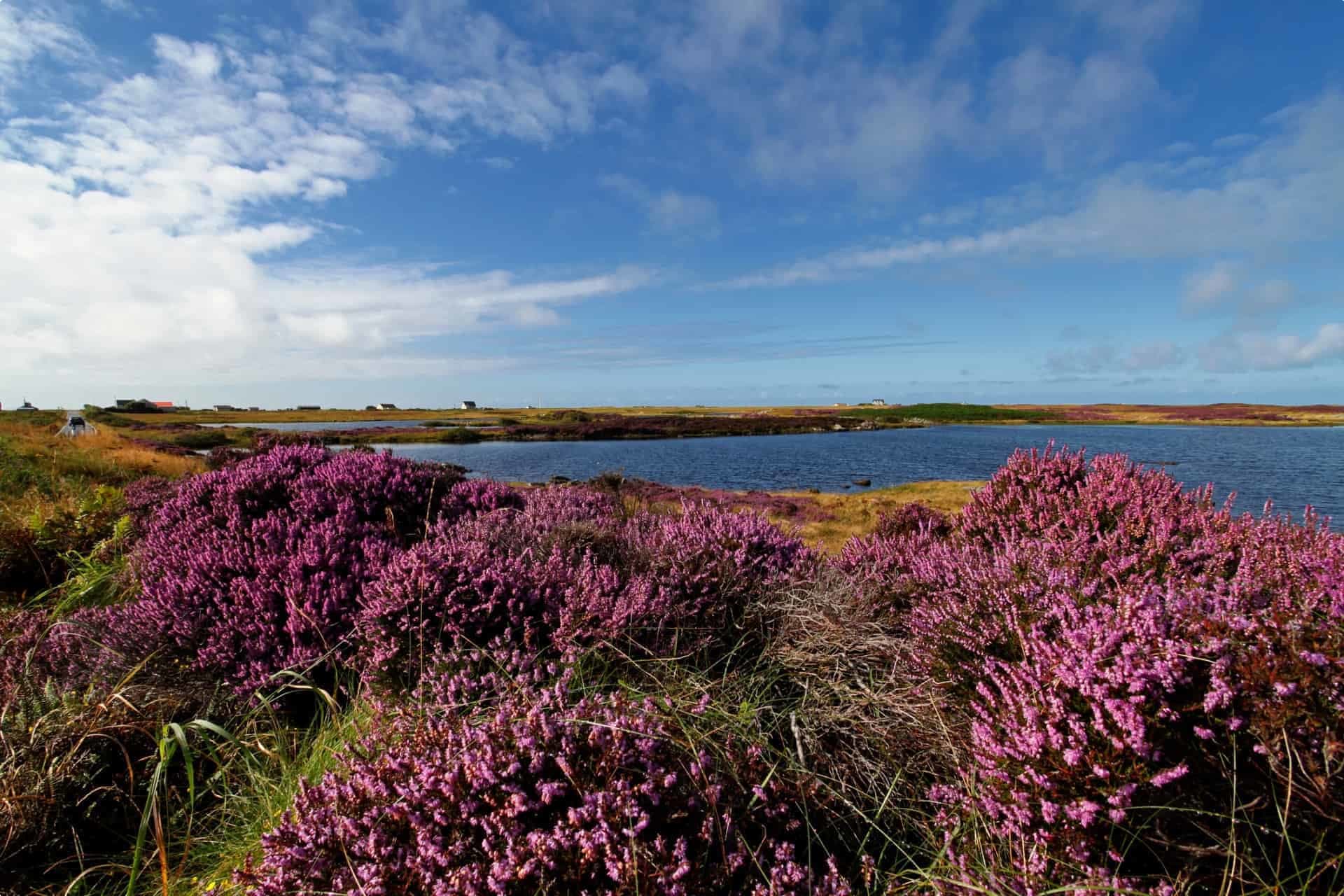
How did people settle in the Outer Hebrides?
You can get a hint of the Outer Hebrides’ settlement history from the Norse place names and the Gaelic language spoken by its inhabitants.
The islands were first settled in the Neolithic period around 4000 BC. The earliest settlers were probably the Picts, which the Romans referred to as the Picti, or “painted ones” perhaps due to their habit of painting dye on their bodies (though this claim is contested by modern historians). They were said to have migrated from Scythia (Scandinavia) before settling and forming powerful kingdoms in what is now northern Scotland. The Picts were more of a confederation of tribes rather than a single tribe, and did not leave written record behind, save for the symbols carved on standing stones which can still be found throughout Scotland.
The Vikings came around the 700s, and you can see the effect of their colonisation in the islands’ place names, majority of which are of Norse rather than Gaelic origin. The islands were ruled under the Norse Kingdom of Mann and the Isles until 1266, when the Outer Hebrides passed to the Kingdom of Scotland. Scottish rule replaced Norse-speaking princes with Gaelic-speaking clan chiefs. The islands became part of the Kingdom of Great Britain after the Treaty of Union united England (including Wales) and Scotland in 1707.
When is the best time of the year to go to the Outer Hebrides?
Visiting the outer Hebrides is best planned for April to June, if you want relatively warmer weather and still avoid the summer crowds.
Weather is an important factor to consider when visiting a destination, and in the Outer Hebrides it can be tricky as the weather is famously unpredictable, sometimes changing in an instant throughout the day. On average, the island enjoys a relatively mild climate. The annual temperature in Stornoway in Lewis average a high of 11.2 degrees Celsius and a low of 5.9 degrees, with more than 1200 hours of sunshine per year. August is the warmest, with a maximum temperature of 16.1 degrees. Once you’re in the Outer Hebrides, don’t forget to check the weather forecast every morning, and plan accordingly.
Do you need a visa to get to the Outer Hebrides?
If you are an EU citizen, you do not need a visa to visit the Outer Hebrides and the rest of Scotland.
However, as the UK has left the EU, it is always a good idea to check visa requirements first before travelling, as the rules may change.
How do you get to the Outer Hebrides?
By plane, you can fly into three airports in the Outer Hebrides from four airports in the United Kingdom:
- from Glasgow to Barra
- from Glasgow or Inverness to Benbecula
- from Manchester, Edinburgh, Inverness, or Glasgow to Stornoway
Direct flights from Scotland take only about an hour. The Barra Airport is the world’s only beach airport–flying there can be an experience in itself!
By ferry, you can travel by sea from the Scottish mainland to the islands. Visitors are advised to book their ferry tickets early, especially if they’re planning to bring their car across.
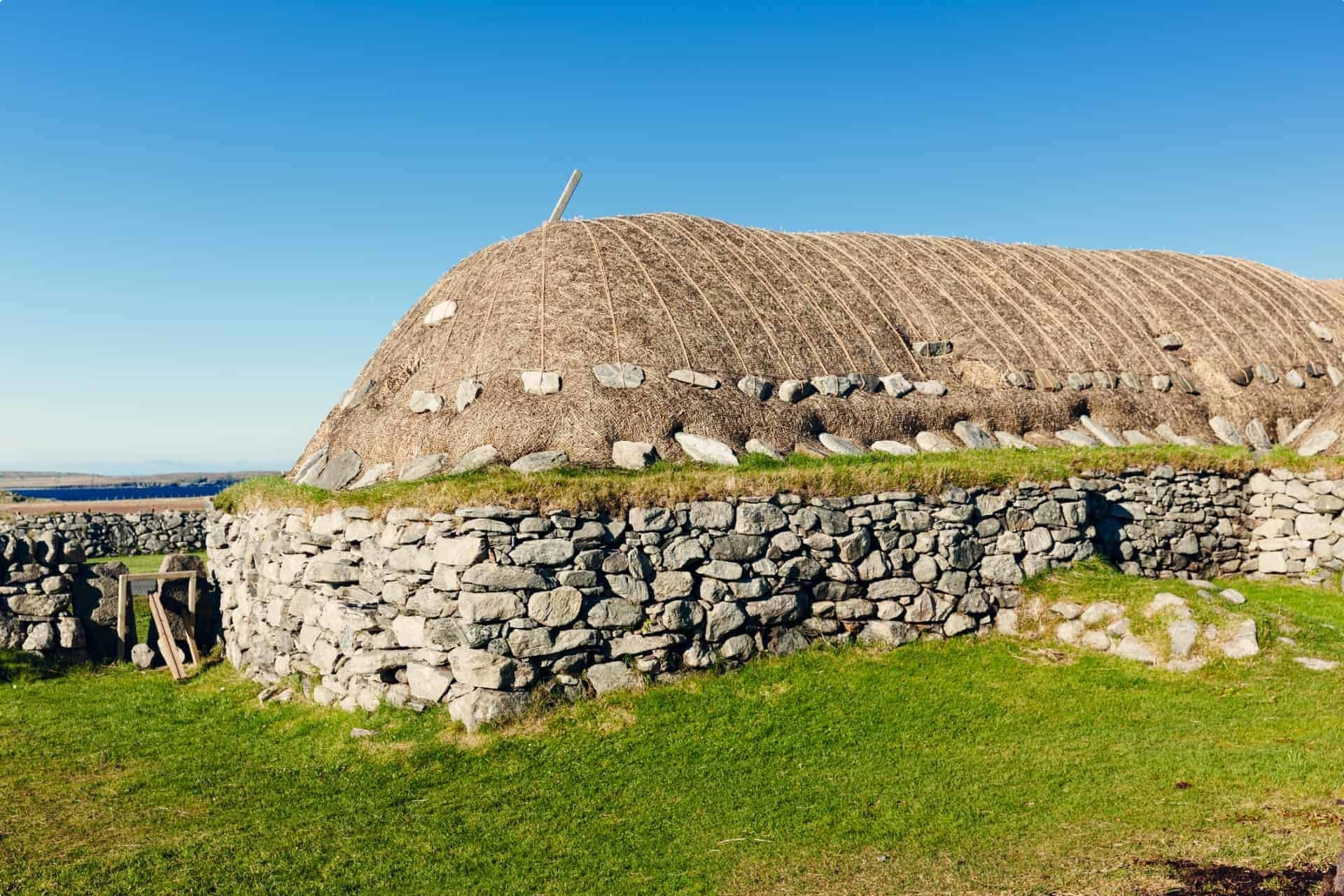
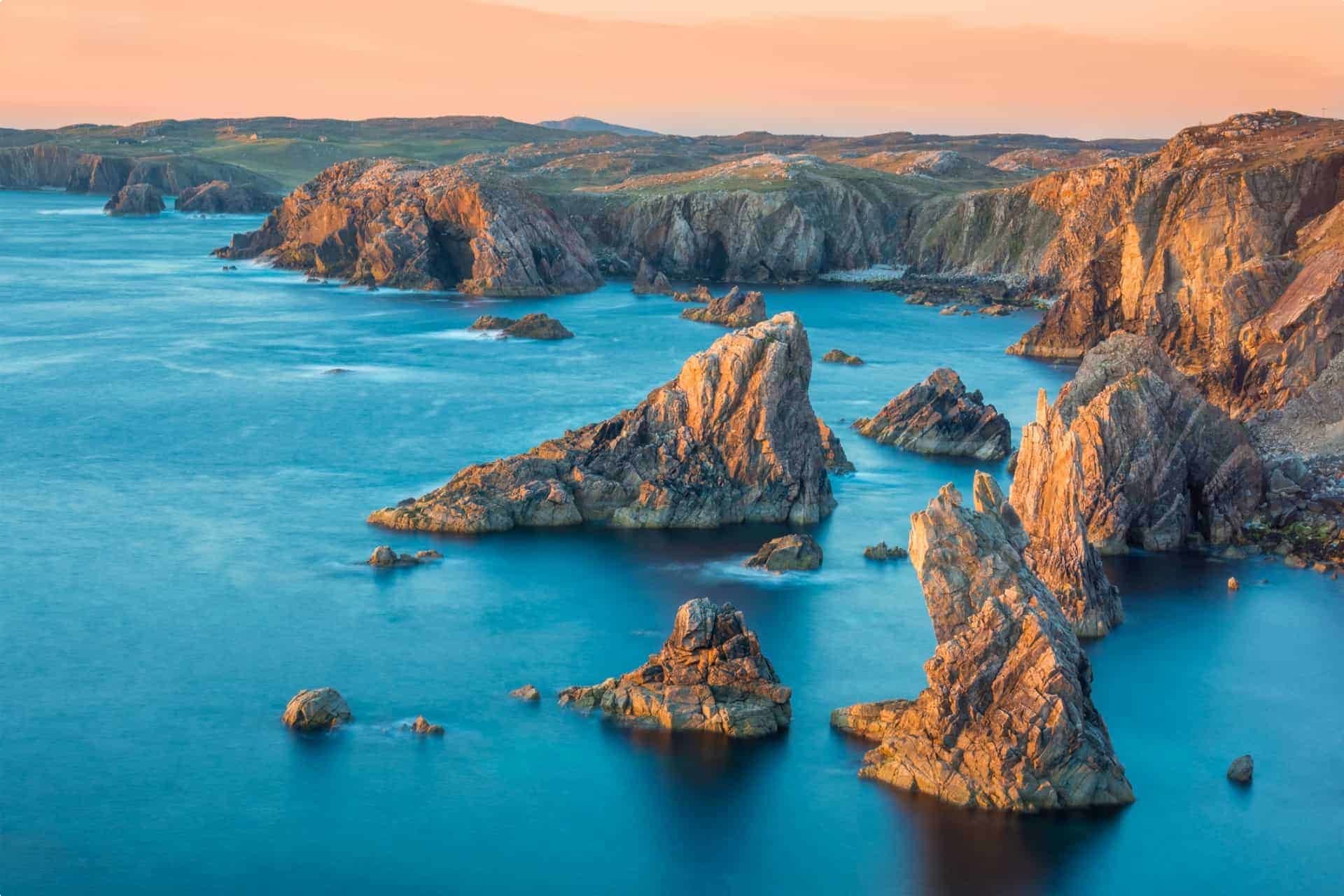
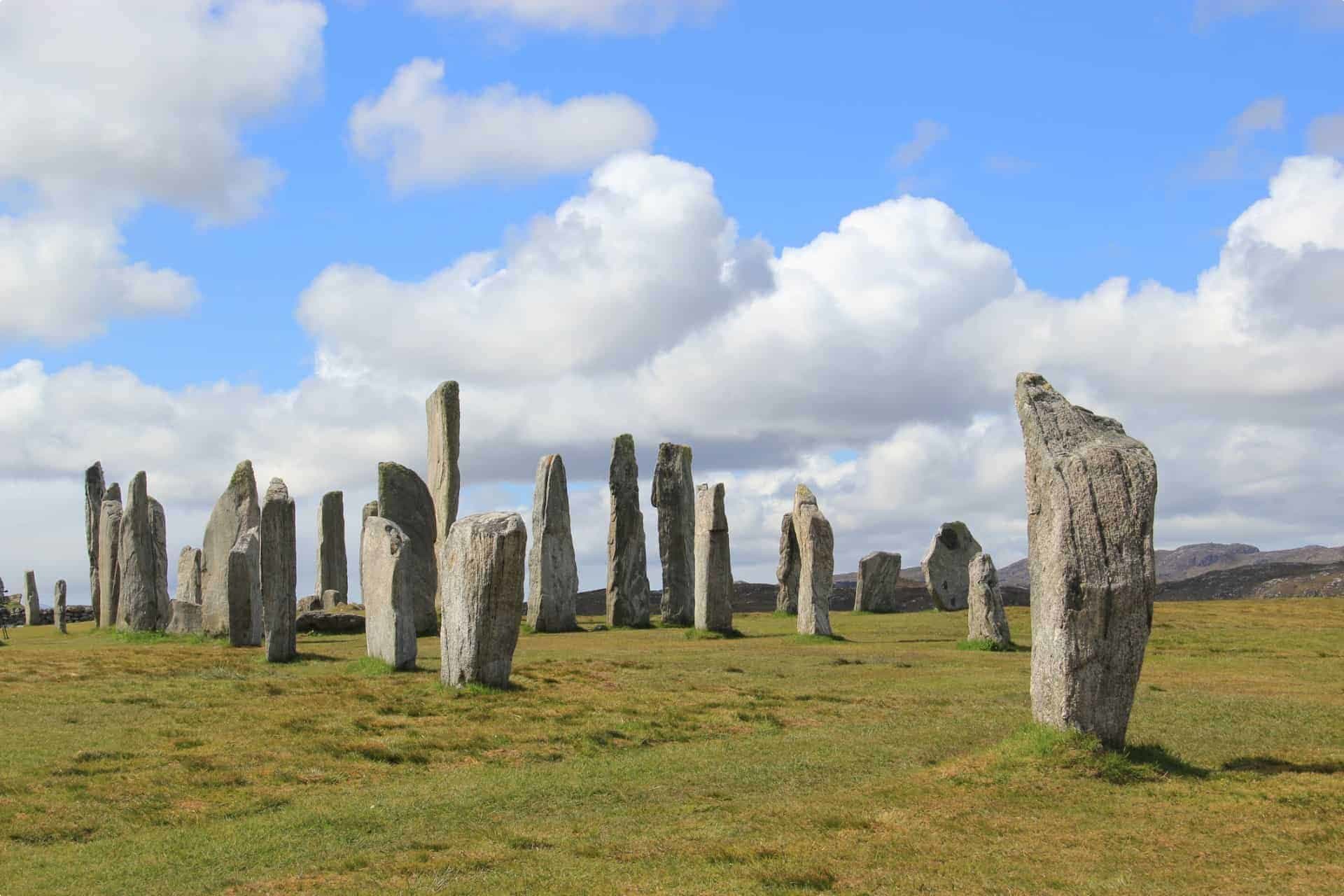
How do you get around the Outer Hebrides?
You can charter a boat and go island hopping, travel by ferry, drive, cycle, or take public transport.
Driving is the popular choice, especially for those staying on the main islands. You can bring you car with you via ferry, or engage car hire providers in the Outer Hebrides. With the causeways, it is possible to drive across the Outer Hebrides, save for two sections where you will be required to take a ferry: Harris to Berneray and Eriskay to Barra. Remember to drive on the left, and watch out for cyclists!
Speaking of cyclists: like a car, you can bring your own bicycle if you wish, or simply hire one. The tranquil landscapes and quiet roads of the Outer Hebrides are perfect backdrops for your cycling adventures.
Public Transport
Bus: There are no Sunday bus services and evening routes are rare even in Stornoway, but buses cover most areas in the day from Monday to Saturday.
Taxis: Taxis are available on the main islands, and some operators even provide tours.
Where can you stay in the Outer Hebrides?
The Outer Hebrides has hotels, guesthouses, and bed & breakfasts, even in the remote locations. Several are run by the Gatliff Hebridean Hostels Trust. The hostels do not take credit or debit card payments (cash or cheque only) and they do not take advanced bookings or large groups. You should play your itinerary early as accommodation on these islands is limited. Famous places like Tobermory fill very quickly.
What can you do in the Outer Hebrides?
Lewis and Harris, located on the most populous island in the Outer Hebrides, is a good place to start your visit. A well-known highlight is the 5,000-year-old Calanais Standing Stones located on the west coast of Lewis. This Neolithic stone structure predates England’s Stonehenge and the Pyramids of Giza.
Other highlights include:
- The Arnol Blackhouse. Blackhouses refer to structures built with double walls of drystone, wooden rafters and thatched rooves. Historic blackhouses can be found across the Scottish Isles, but the best examples are in Lewis. Here, the harsh environment is reflected in the thicker walls and sloped roofs, where the strong winds demanded extra fortifications. Some blackhouses have been restored; the Arnol blackhouse now operates as a museum. Built in 1885 to house a family at one end and livestock at the other, this dwelling was quite miraculously occupied until 1964. Since this point, it is unchanged and very well preserved. Staff keep a peat fire burning inside and, without a chimney, the thick smoke billows slowly through the thatched roof and out the doors. It adds an air of authenticity, and highlights one of the possible sources of the name, blackhouse.
- Lews Castle. This Victorian era castle is located west of Stornoway on Lewis, and set within attractive grounds. It was built in 1844-51 for Sir James Matheson, a Scottish trader who earned a fortune in the Chinese Opium trade and purchased the whole island. English industrialist and philanthropist Lord Leverhulme bought the castle from the Lewis family in 1918; and in 1923, he gave the castle to the people of Stornoway parish. Since then, it has served different purposes until it was awarded 4.6 million pounds by the Heritage Lottery Fund in 2011 and converted to a museum and cultural centre. In 2016, the ground floor was opened to the public, including a café and restored ballroom. In 2017, luxury apartments became available to holidaying guests.
- Museum Nan Eilean. This is the museum located within Lews Castle: the product of a generous redevelopment in 2011. Exhibitions here celebrate local culture and at present, commemorate the loss of the ill-fated HMY Iolaire.
- Lovers of nature and wildlife will be richly rewarded here in the Outer Hebrides, where seal colonies – both grey and cute dog-like common varieties – are established, and bird populations such as the puffins, corncrake and razor bills flourish. There are otters, dolphins and basking sharks to spot as your walk or ride your bike around the islands. You are never far from the scenic woodlands, sandy coastal shores, rolling green hills or the misty and undulating peats of Lewis and Harris, and are everywhere reminded of the relationship forged between locals and nature.
Lewis, Harris, and North Uist are Protestant, belonging in the main to the free Presbyterian Church. Here, the Sabbath is strictly observed, with most bars, shops and restaurants closed on Sundays. South Uist and Barra are Roman Catholic, while Benbecular is a mixture of the two. There is no friction between the religious communities, but do take note of the religious observation of the Sabbath in order to avoid offence.
Where can I get more information about the Outer Hebrides?
Odyssey Traveller has an article about the Outer Hebrides where you can get more information.
Of course, there is no better way to know more about the Outer Hebrides than on a guided, small-group tour. Odyssey Traveller offers a 20-day tour departing Glasgow, hopping islands as we circumnavigate the Scottish coastline from west to east. We spend time at Lewis and Harris, visiting key sites and monuments, and meeting local producers of cheese, smoked fish, and tweed.
The standing stones of Calanais are also included on our Prehistoric Britain small group tour, where we move south through Scotland, England, and Wales to uncover the secrets of the past. Dawn at Stonehenge is a particular highlight of this specialty tour.
-
Links to external sites to learn more about visiting the Outer Hebrides
GOLDEN EAGLES
EAST COAST
STONE CIRCLE
SCOTTISH ISLAND
Related Tours
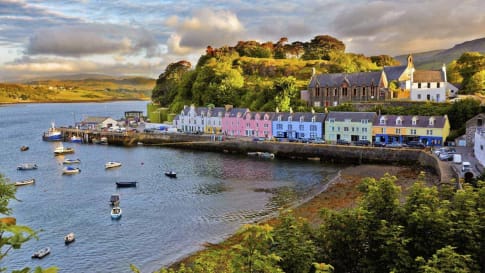
20 days
Jul, Sep, May, AugScottish Islands and Shetland small group tours for seniors
Visiting Scotland
An escorted small group tour for couples and solo travellers of the Scottish isles including the isle of Skye draws on local guides to share their knowledge of the destinations in this unique part of Scotland. UNESCO world heritage site are visited as breathtaking scenery and authentic experiences are shared in a group of like minded people on this guided tour of remote Scotland.
From A$16,695 AUD
View Tour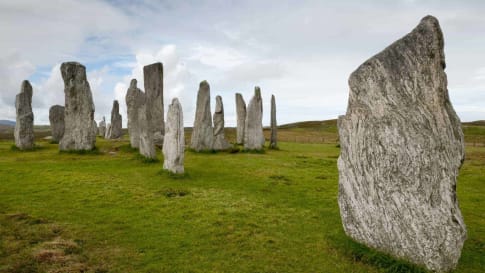
21 days
AugPrehistoric Britain small group history tour including standing stones
Visiting England, Scotland
This guided tour invites you to explore UNESCO World heritage sites at Skara Brae in the Orkneys, Isle of Skye, and Stonehenge in a prehistoric tour. This escorted tour has trips to key sites in Scotland, and the Irish sea in Wales such as Gower Peninsula and National Museum in Cardiff and England. Each day tour is supported by local guides.
From A$16,750 AUD
View Tour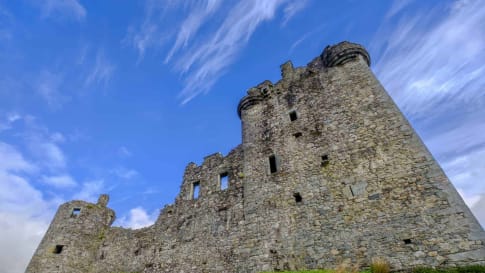
22 days
Jul, Sep, Jun, AugScotland small group tour | Tracing 5,000 years of history
Visiting Scotland
This guided tour of Scotland with a tour leader and local guides includes the isle of Skye, Orkney islands, the Scottish highlands with breathtaking scenery. Edinburgh including the royal mile, Palace of Holyroodhouse, Fort William, Urquhart castle, Stirling castle, loch lomond, Hadrians wall and New Lanark also a UNESCO World heritage site.
From A$15,995 AUD
View Tour
19 days
JulWhisky and Other Scottish Wonders
Visiting Scotland
A guided small group tour of Scotland is a day tour collection that includes Edinburgh, the royal mile, Edinburgh castle, and the old town a UNESCO World heritage site Experience and learn about, Kellie castle, St Andrews, Skye, Balmoral castle, Loch Lomond and Loch Ness as well touring the Scottish highlands to finish in Glasgow.
From A$17,525 AUD
View Tour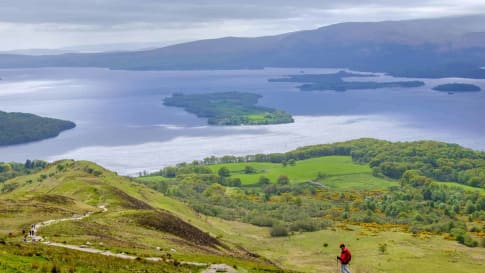
13 days
Jun, Aug, MayScotland's Great Trails Walking Tour
Visiting Scotland
An escorted walking tour of Scotland. This trip is mainly in the Scottish Highlands. Your tour leader guides you to Stirling Castle, Loch Lomond and Craignorms National park with experienced local guides. The tour for mature couples and solo travellers finishes in Edinburgh with time to visit Edinburgh Castle and the Royal mile a UNESCO World heritage site.
From A$11,560 AUD
View Tour
5 days
Jun, JulEdinburgh City Tour
Visiting Scotland
A guided tour of the capital of Scotland, Edinburgh is a day tour collection with a tour leader and local guides. The old town of Edinburgh including the Royal mile and New town of Edinburgh are a UNSECO world heritage site and are included in our itineraries as well the Palace of Holyroodhouse.
From A$4,580 AUD
View TourArticles

10 great books to read on the Scottish Isles
Why read books about the Scottish Isles before travelling there? This is recommended list of books for mature & senior travellers planning to travel to the Scottish Isles either as part of an Odyssey Tour…
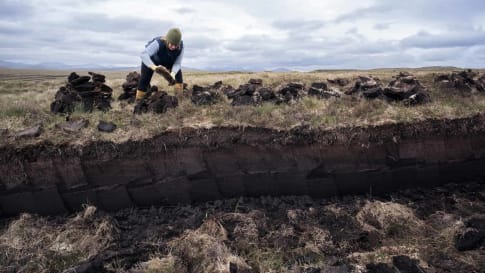
Peat and Scotland
Article about Peat, a historically important organic product for fuel and making whisky. Read and learn more about Scotland, its history, the islands and neolithic past before joining a small group tour for senior couples and mature solo travellers.
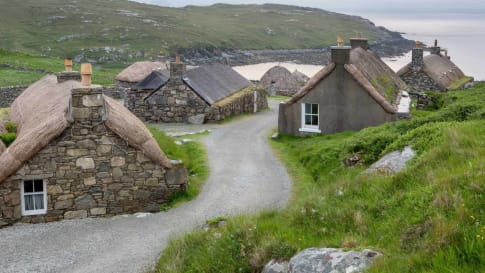
Islands of the Outer Hebrides: The Definitive Guide for Travellers
Scotland's Outer Hebrides are discussed in this article to assist the mature solo and couple in planning to visit Scotland and the British isles on a small group tour.
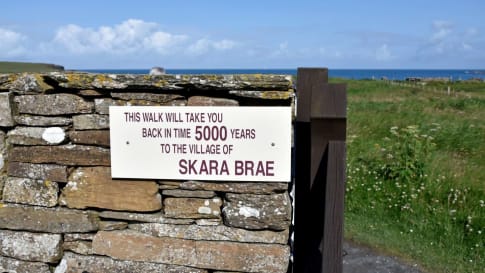
Skara Brae, Scotland
Article introducing Neolithic Britain and the trading routes to Iceland, the Faroe Islands and the Irish sea. Skara brae is included on the Scottish isles tour and the Prehistoric Britain program. Small group tours for senior couples and mature solo travelers.
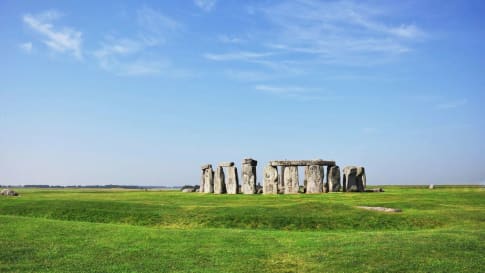
Standing Stones in Prehistoric Britain
Standing Stones in Prehistoric Britain Stonehenge, England, United Kingdom The standing stones of Great Britain continue to be the subject of research and archaeological hypothesis. Britain is not the only location where standing stones are…
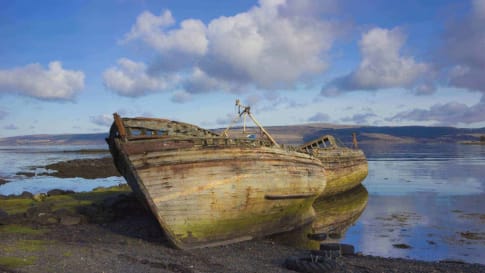
The Best of the Scottish Islands
small group tours of the Scottish isles including Orkney, Skye, Iona and Shetland plus others for senior couples and solo travellers.
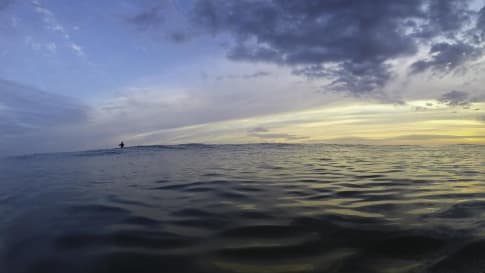
Atlantic Ocean and How it Shaped Ancient Communities In Europe
Article of interest for senior couples and mature solo travellers joining a small group European tour to Faroe Islands, Scottish Isles, Morocco or Portugal. Focus is on the early exploration of the Atlantic.

Exploring Britain's Prehistoric Past: The Definitive Guide for Travellers
Article on Britain's neolithic past for small group educational tours for senior couples and mature solo travellers interested in learning about Standing stones, burial chambers, Skara Brae and Stonehenge or Beaker people.

Lumps and Bumps: How to Read the British Landscape
The British landscape has been worked and re-worked. It is secrets of this palimpsest landscape is revealed through drainage patterns and prehistoric features all the way through to the modern day. These small group tours for mature and senior travellers examine the landscape from the Neolithic, to Roman, through the seven ages of Britain in walking tours and history tours of Britain.
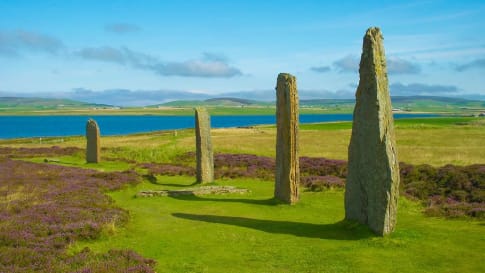
The Scottish Isles
The islands of Scotland are historically rich from Skara Brae to Isle of Skye and the inner and outer Hebrides. Learn more on a small group tour for seniors for couples and solo travellers about the Scottish isles.

